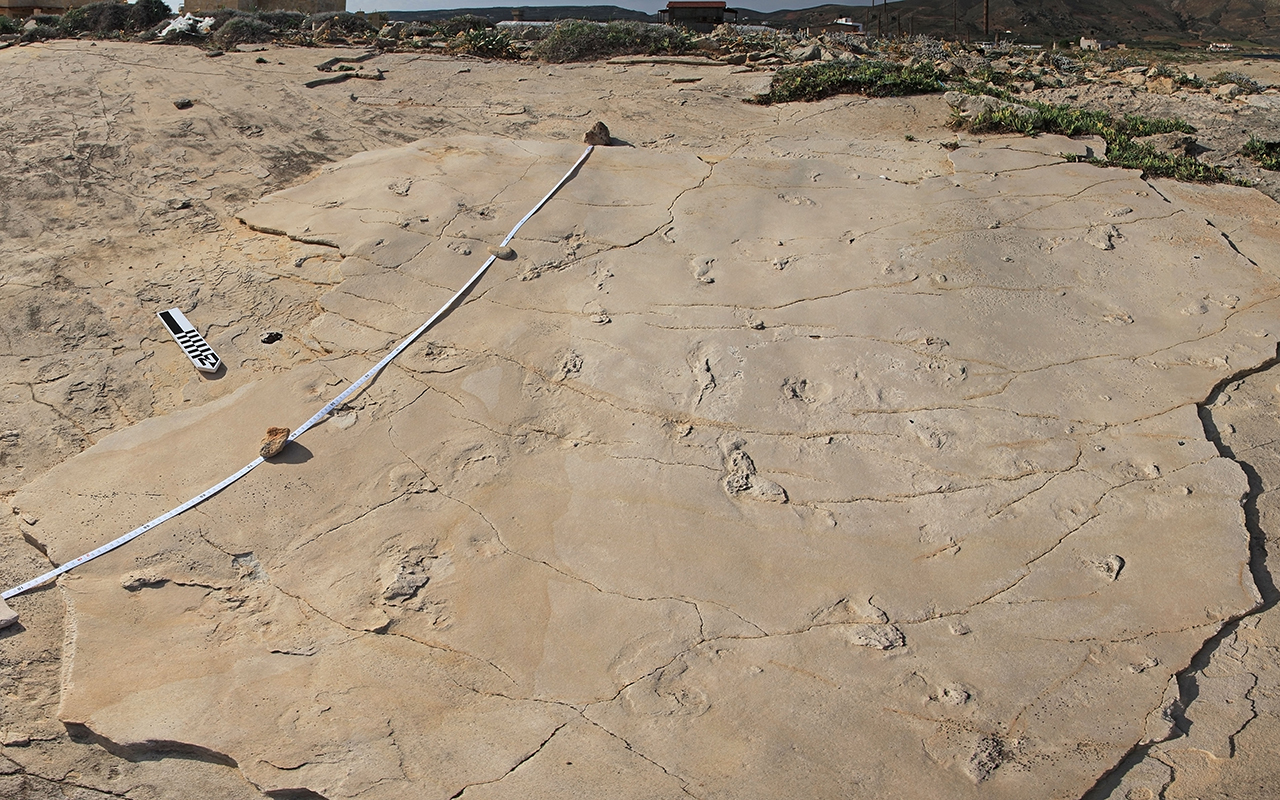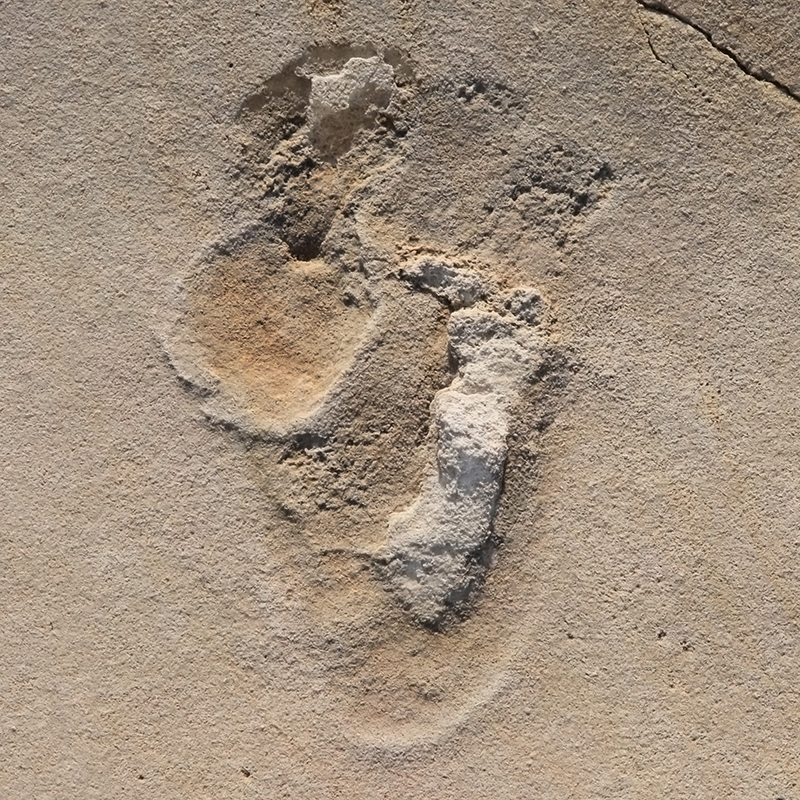Fossil-Footprint Thief Couldn't Outrun the Law

A man who recently stole 10 fossil footprints of ancient human relatives from a dig site in Greece failed to hide his own tracks from the police, who apprehended him last week, according to news sources.
The purloined human-like footprints, which are estimated to be 5.7 million years old, are part of a group of 40 prints in Trachilos, on the island of Crete. They were reported missing on Sept. 12 by a visitor to the location, who notified authorities that the site appeared to have been vandalized and that chunks of rock holding some of the ancient fossils had been removed, reported the Athens-Macedonian News Agency (A-MNA).
It's still unclear what the thief's intentions were for the stolen fossils, but they were already so well-documented that it would have been next to impossible for him to pass them off as unknown, serendipitous discoveries, representatives from the NHMC explained in a statement.
"If anyone thought that they could profit from this act, they are out of luck," they said.
The footprints were discovered in 2002 by a paleontologist while he was on vacation, and he initially identified them as belonging to a type of mammal. He returned to the site in 2010 to examine them in greater detail with another paleontologist, and they eventually determined that the footprints belonged to a hominin — a group that describes modern and extinct humans, and our extinct relatives. They announced these findings in a study published Aug. 31, 2017, in the journal Proceedings of the Geologists' Association.

The study described the prints' maker (or makers) as bipedal, with a large, rounded ball at the front of the foot and what appears to be a row of forward-pointing digits that include a larger "big toe."
All of the tracks are similar in size, with consistent outlines, the researchers said, and in shape and structure, the prints strongly resemble those of other early humans and their ancient bipedal relatives. However, the study authors proposed that the prints also could have been made by an unknown primate that was not part of the human family tree but had evolved a similar bipedal adaptation for walking.
Sign up for the Live Science daily newsletter now
Get the world’s most fascinating discoveries delivered straight to your inbox.
Original article on Live Science.

Mindy Weisberger is an editor at Scholastic and a former Live Science channel editor and senior writer. She has reported on general science, covering climate change, paleontology, biology and space. Mindy studied film at Columbia University; prior to Live Science she produced, wrote and directed media for the American Museum of Natural History in New York City. Her videos about dinosaurs, astrophysics, biodiversity and evolution appear in museums and science centers worldwide, earning awards such as the CINE Golden Eagle and the Communicator Award of Excellence. Her writing has also appeared in Scientific American, The Washington Post and How It Works Magazine. Her book "Rise of the Zombie Bugs: The Surprising Science of Parasitic Mind Control" will be published in spring 2025 by Johns Hopkins University Press.









